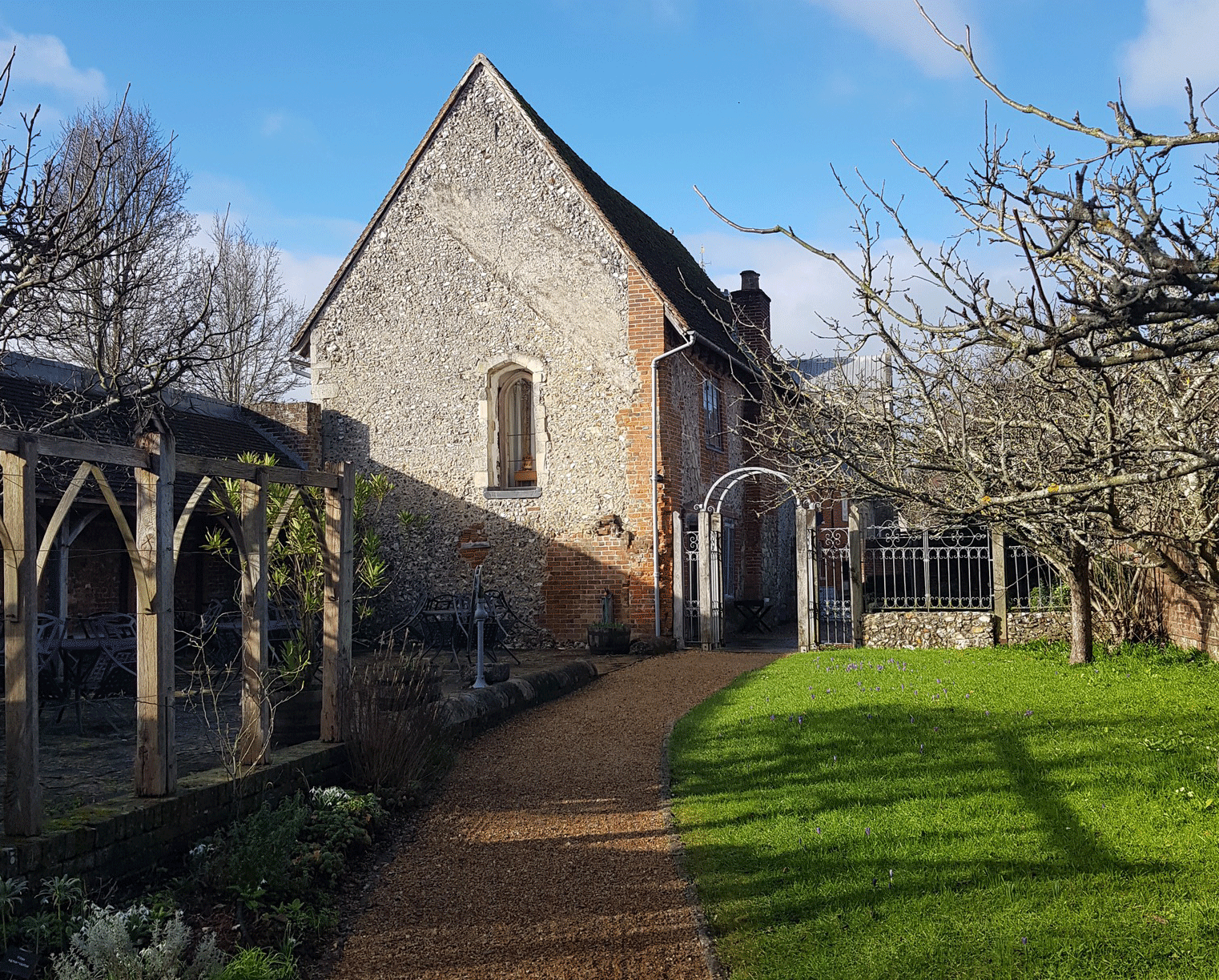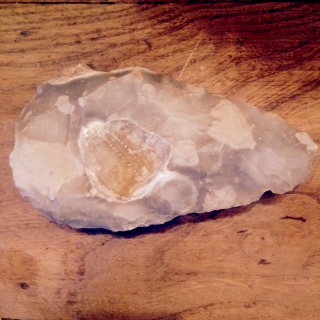PALEOLITHIC HAND AXE
One of the hand axes in our collection incorporates an impression of a fossilised sea urchin in the center of the tool. The axe had been dated to the Paleolithic period (c. 500,000 – 10,000 BCE) when axes such as this were used as tools for chopping, scraping and cutting as well as early weaponry. This axe is particularly fascinating because of the remaining impression of the sea urchin.
Recent archeological and historical research has suggested that early humans began to evolve to think in the abstract and to conceptualise patterns and symmetry. Key indicators of this evolution are the tools left behind, many of which were beautifully symmetrical or created out of hard stone which was difficult to shape. This evidence has led many archaeologists to believe that, because of the effort that went into making these tools as well as the level of detail, that the axes were created with both artistic intent as well as a symbol of high status.
The incorporation of sea urchins into hand axes was also possibly the earliest form of collecting, and the interesting patterns on the fossils seem to have appealed to Palaeolithic man as much as they do to collectors today. There are examples of hand axes with sea urchins included in the design which were found in places across the globe, from Norway to Iraq. Interestingly, finds of ornaments such as these in burial sites in the south of England, notably not far away on Salisbury Plain, suggest an affiliation in England at least between these artifacts and beliefs associated with the afterlife.
It is difficult for Archeologists to pinpoint exactly the meaning behind such wonderful pieces as nothing from the period was written down. However, that some axes have been discovered with the fossilised urchins still in tact, because the urchins are not necessary to the utility of the instrument, and that many were discovered in burial sites, suggests that artifacts such as this were ornamental. This hand axe is a wonderful find, especially as it was not discovered as part of a burial site, quite likely a unique and interesting example of art in one of its earliest forms. The Axe is situated in the museum amongst similar items such as hand axes of various shape and size and fossilised urchins.
The hand axe was discovered and lent to the museum by Mr J.B.S. Attlee after he discovered it in the Luzborough Hill gravel pit.
BIBLIOGRAPHY
Burbridge, B., (ed)., The History of Romsey: A LTVAS Publication (Romsey, 2000).
McNamara, K. J., The Star-Crossed Stone: The Secret Life, Myths and History of a Fascinating Fossil (Chicago, 2010).
O’Malley, M., When the Mammoth Roamed Romsey: A Study of the Prehistory of Romsey and District (Romsey, 1982).
http://www.newappsblog.com/2012/11/are-hand-axes-works-of-art.html





